Eggs are perhaps one of the most versatile ingredients that come from animals like chickens, turkeys, ducks, and geese. But what are the differences between brown eggs vs. white eggs? What gives eggs their coloring and how does the coloring impact the flavor and nutritional profile of the egg? Are these the questions that come to mind when you see a multi-colored egg? Well, you’ve come to the right place. Egg coloration results directly from the breed of chicken that is laying the egg. While the egg is developing, there are certain chemicals within the chicken that either coat the calcium shell of the egg or permeate through it (via ABC).
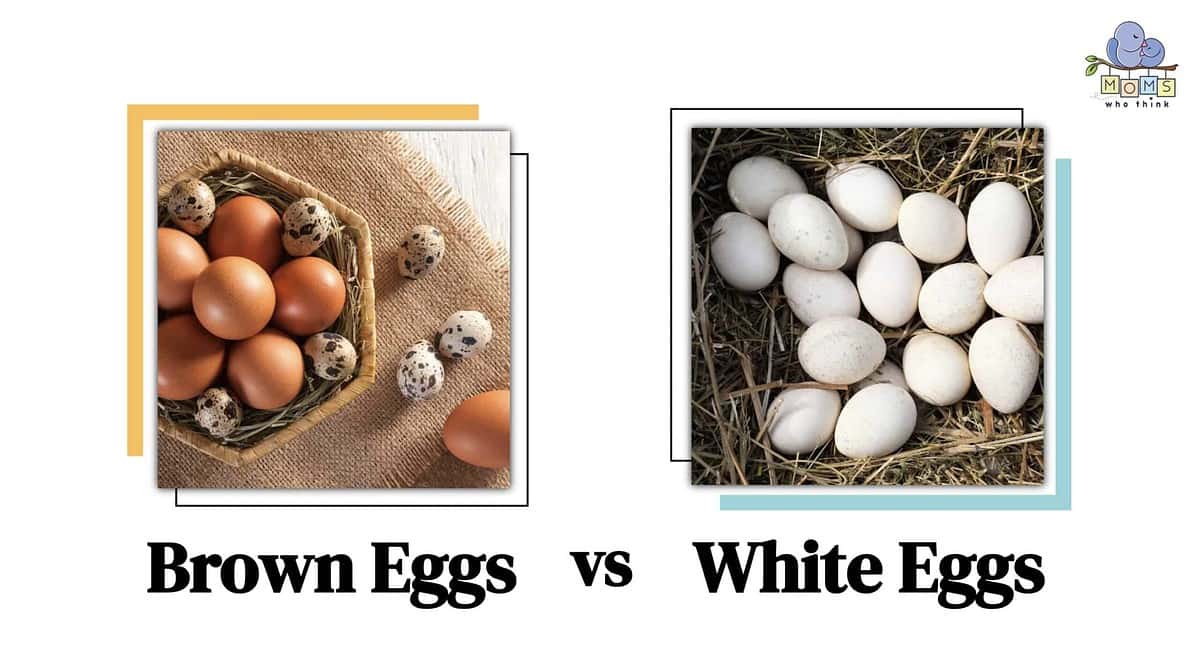
©
Keep on reading as we discuss the process of laying eggs. Find out if the color does, in fact, make any difference. You’ll learn about the history of chickens, and maybe we’ll discuss some of the other common egg colorations. Check out some recipes, and uses for eggs from our website. You'll also get some ideas of egg alternatives if you’re wanting to try something new. Let’s get into the colorful details about what exactly contributes to the differences, or lack of, between brown eggs vs. white eggs.
Brown Eggs vs. White Eggs: How Are They Different?
The color of brown eggs vs. white eggs is dependent on the breed of chicken that lays the eggs. According to Healthline, there are a few other factors that can impact egg color and size. We’ll get more into those a bit further down. But the main thing to know is that typically the color has little impact on the overall taste and nutritional profile of an egg. The color is simply due to the breed and chemicals released during the process of egg-laying.
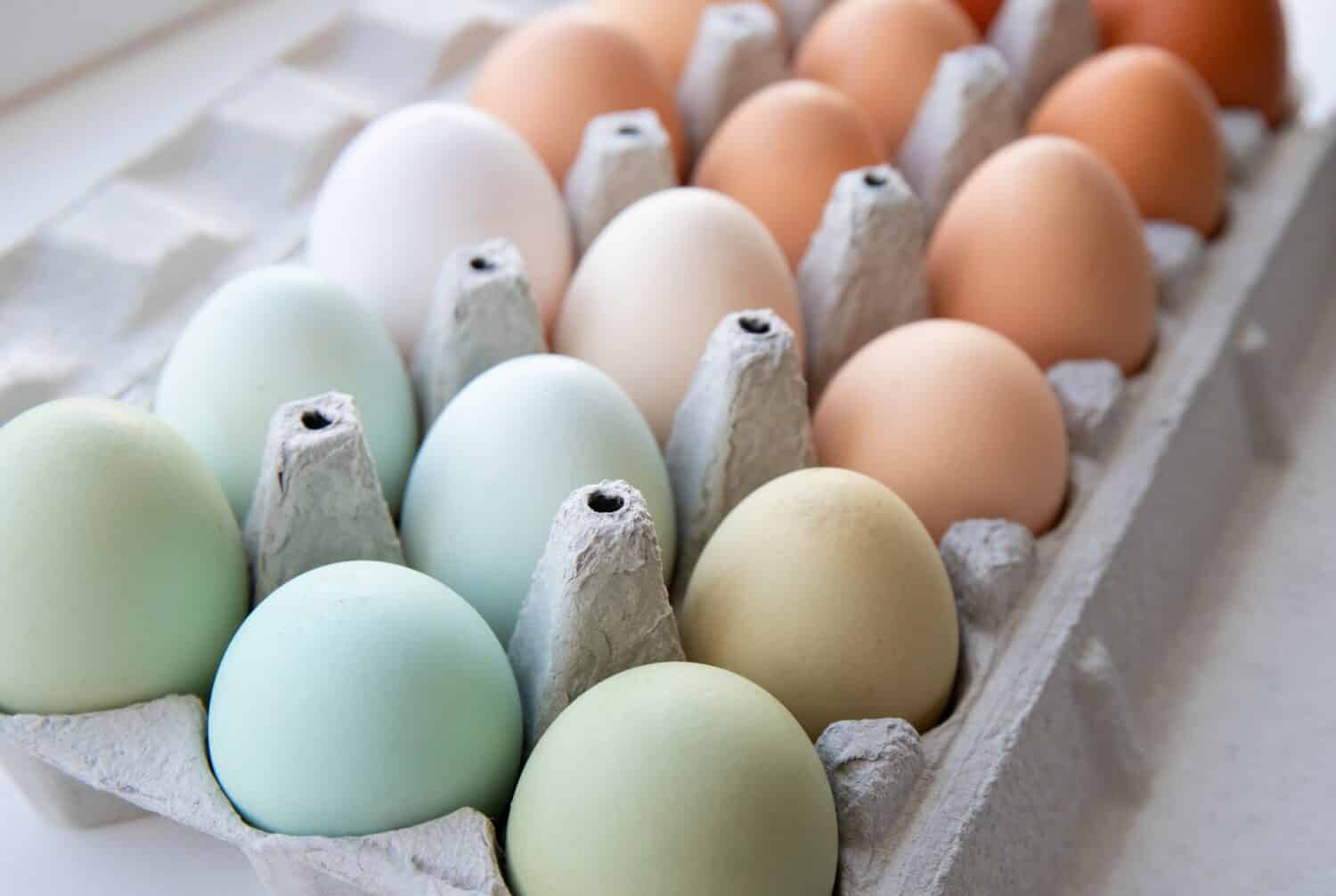
Eggs come in so many colors largely due to the breeds of chicken that lay them.
©FotoHelin/Shutterstock.com
History and Origin of the Chicken Breed
Chickens have been around for thousands of years. They are directly descended from the dinosaurs. scientific evidence suggests that a combination of several ancient bird breeds contributed to the modern chickens we know and love today. The Southeast Asian Red Junglefowl and the Grey Junglefowl both show characteristics that have contributed to the modern iteration of the chicken. These birds held cultural significance in both ancient Greek and Persian cultures. And during the 20th century, they were first domesticated for cock-fighting. Nowadays, many people use chicken meat and the eggs that chickens lay in numerous ways. You'll find eggs in all kinds of recipes, traditional dishes, and as a dietary staple for protein, and nutrients in the raw egg (via The Smithsonian).
Where Do Chicken Eggs Come From?
Chicken eggs are laid by female chickens once fertilization has occurred. First, the protective yolk casing, known as the vitelline membrane, forms. Next, layers of thick proteins combine to create the egg white, of the albumen. Stringy pieces of membrane called chalazae form as the egg is spun in the reproductive tract of the chicken. The purpose of the chalazae is to keep the yolk at the center of the egg. It stops the yolk from sticking to the sides. The egg shape takes around an hour to form. Meanwhile, the eggshell, which comes from the “shell gland” of the hen, takes around 20 hours to properly set. The last five hours are when the pigmentation from the particular breed of chicken permeate or coat the calcium shell of the egg (via Purina Mills).
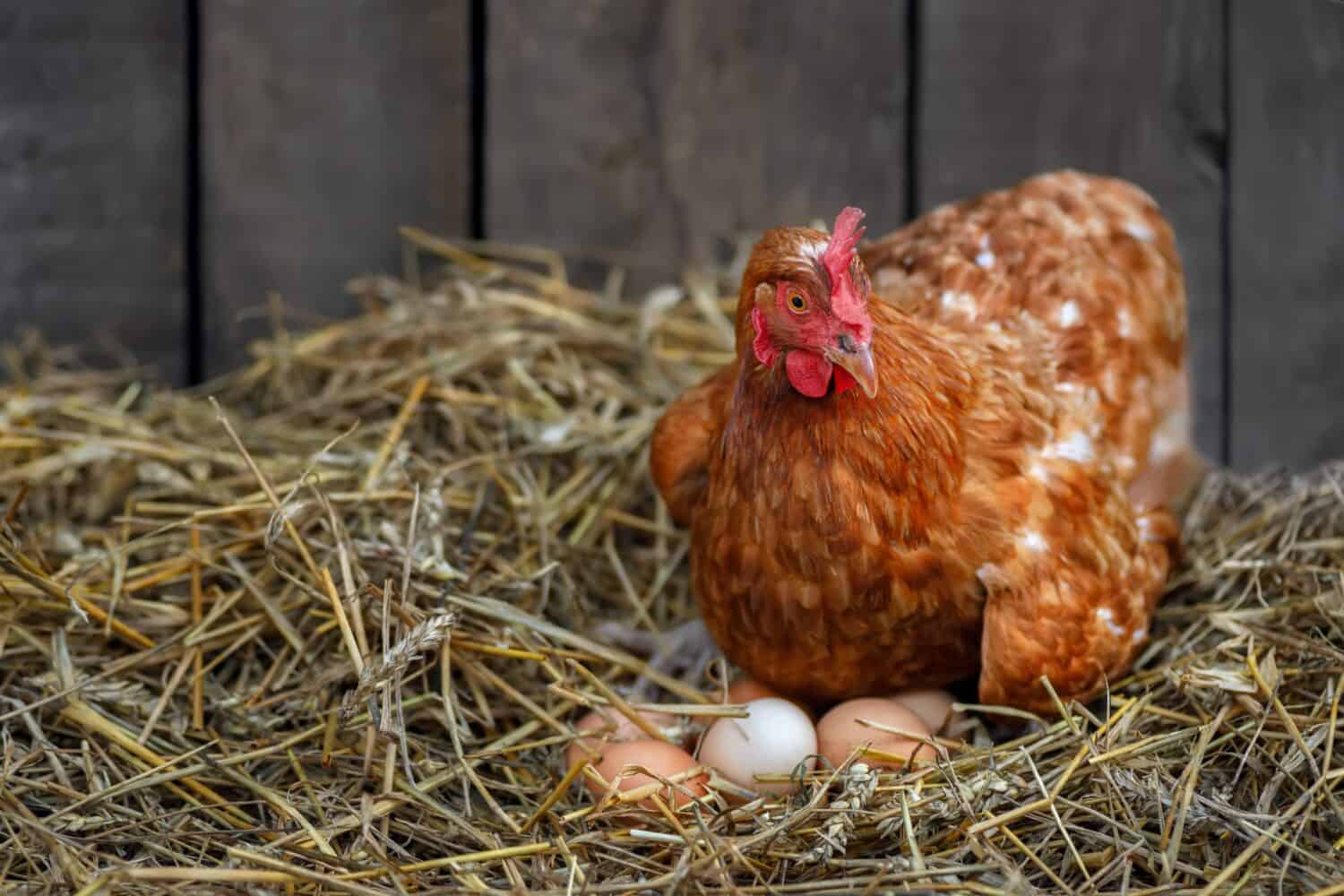
Overall, egg formation takes around 25 hours before the hen will lay it.
©Alter-ego/Shutterstock.com
How Do Eggs Get Their Coloration? Brown Eggs vs. White Eggs, and Blue Eggs too!
Chicken egg coloration depends on the breed of chicken. For instance, a chicken breed called the “White Leghorn” typically lays white eggs. “Rhode Island Red” chickens more commonly lay brown eggs. Other breeds entirely can lay blue-tinged or greenish eggs. Each of these egg types receives its coloration from chemical pigments that are naturally occurring in chickens. In brown chicken eggs, the pigment is known as protoporphyrin IX. This pigment is what contributes to the reddish-brown coloration of blood. The blue pigment is called biliverdin and is also found in the greenish blue of bruises. Combine green and blue, you’ll get the green pigment, which means both these compounds coat or permeate green eggs. These pigments can be impacted by the age of the chicken. It can also respond to factors like the chicken’s stress level and the contents of its diet.
How White Chicken Eggs Are Formed
We talked about brown eggs, blue eggs, and green eggs, but what about white eggs? White eggs are actually the baseline coloration for all eggs. The pigment deposits in the final stretch of egg development. If the pigment permeates the egg, both the insides and the outsides will be the same particular shade. Brown eggs receive their coloring later in the process. This means that the protoporphyrin IX pigment doesn’t dye the inside of the shell. Crack one open and you’ll find the original white color of the egg before it was chemically altered (via Michigan State University).
Nutritional Facts About Eggs
As we’ve discussed, certain factors like the diet and stress levels of the chicken can influence the size, sometimes color, and occasionally the flavoring of an egg. None of these things typically affect the nutritional profile of chicken eggs. Overall, all colors of chicken eggs are considered quite healthy. They’re a great source of protein, full of vitamins, and low in calories. Chickens who spend more time in the sun have a higher content of vitamin D, and hens with nutritious diets can increase omega-2 fatty acids, and other healthy vitamins and minerals.
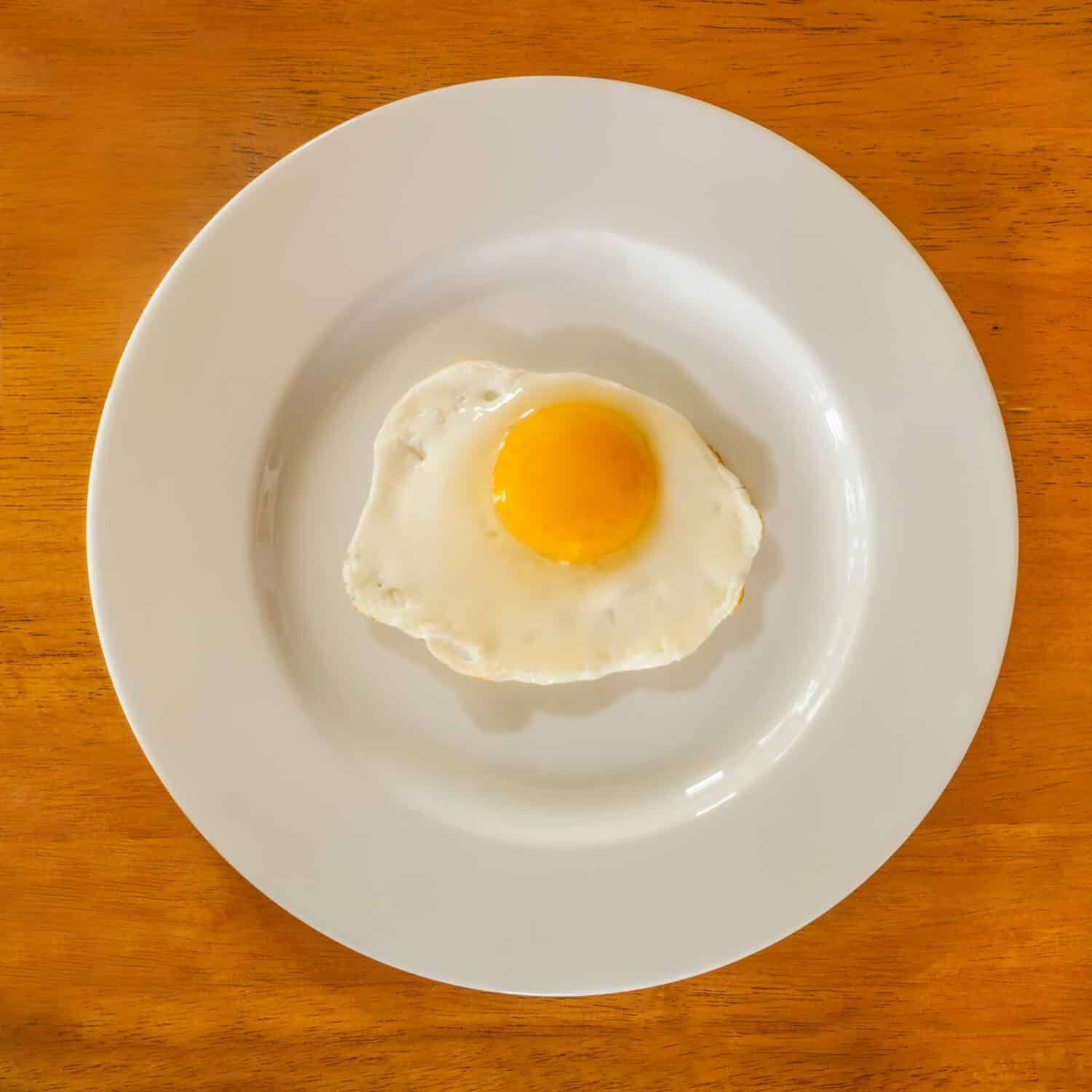
There are numerous ways to make eggs, read on to get some recipe ideas!
©Andrew S/Shutterstock.com
Recipes Using Eggs
Eggs are quite versatile. They can be hardboiled, poached, coddled, fried, and scrambled. In baked goods and desserts, they provide structure and are intrinsic to cakes, cupcakes, certain sweet bread, meringue, and custard dishes. Egg whites are often used in cocktails, and in seasonal drinks like eggnog, alcoholic or otherwise. Check out some of these great recipes from our website:
- Bacon and Cheese Quiche
- Scrambled Egg Breakfast Bake
- Ham, Brie, and Tomato Frittata
- Busy-Night Breakfast Bake
- Easy Deviled Eggs
- Potatoes and Eggs Recipe
- Baked Scrambled Egg Breakfast
- Baked Breakfast Scrambled Egg Casserole
- Eggnog Recipes
- Sausage and Egg Overnight Casserole
- Crock Pot Eggnog Monkey Bread
Possible Alternatives To Brown Eggs vs. White Eggs
For other kinds of eggs, you can try out quail, turkey, duck, or pheasant. These eggs vary in size, and appearance, which means if you’re substituting them for chicken eggs you may need to shift the recipe for the size of the egg. The texture may be different, and the flavor may change slightly, however, overall most of these eggs can be eaten in lieu of chicken eggs. In terms of vegan egg options, people often use ingredients like applesauce, baking soda, and vinegar, silken tofu, or ripe bananas in lieu of eggs.
Things To Keep In Mind And Other Resources
Typically, brown eggs cost more at the store, lending to the belief that brown eggs are healthier or of higher quality than other colorations. This is not the case. Brown eggs are priced higher because brown chickens tend to lay larger eggs. There are specialty types of eggs that involve more overhead costs, like free-range and organic suppliers. However, overall the production costs and expenses of owning brown chickens are similar to those of white chickens, the larger eggs can still be priced more due to their size. Similar to how berries are priced by overall weight. In situations where you just need eggs and the size doesn’t necessarily matter, it's great to know that there’s essentially no difference in the quality due to the coloration or size of chicken eggs. For more egg-related content, check out these articles:
- How To Introduce Eggs To Baby Safely In 3 Steps
- Sunny-Side Up vs. Over-Easy – The Secret to Healthy Fried Eggs
- Turkey Eggs vs. Chicken Eggs: Exploring the Differences
- Quail Eggs vs. Chicken Eggs: Size, Taste, and Cost Showdown
- Duck Eggs vs. Chicken Eggs: 3 Key Differences & Nutrition Comparison
Brown Eggs vs. White Eggs: Final Thoughts
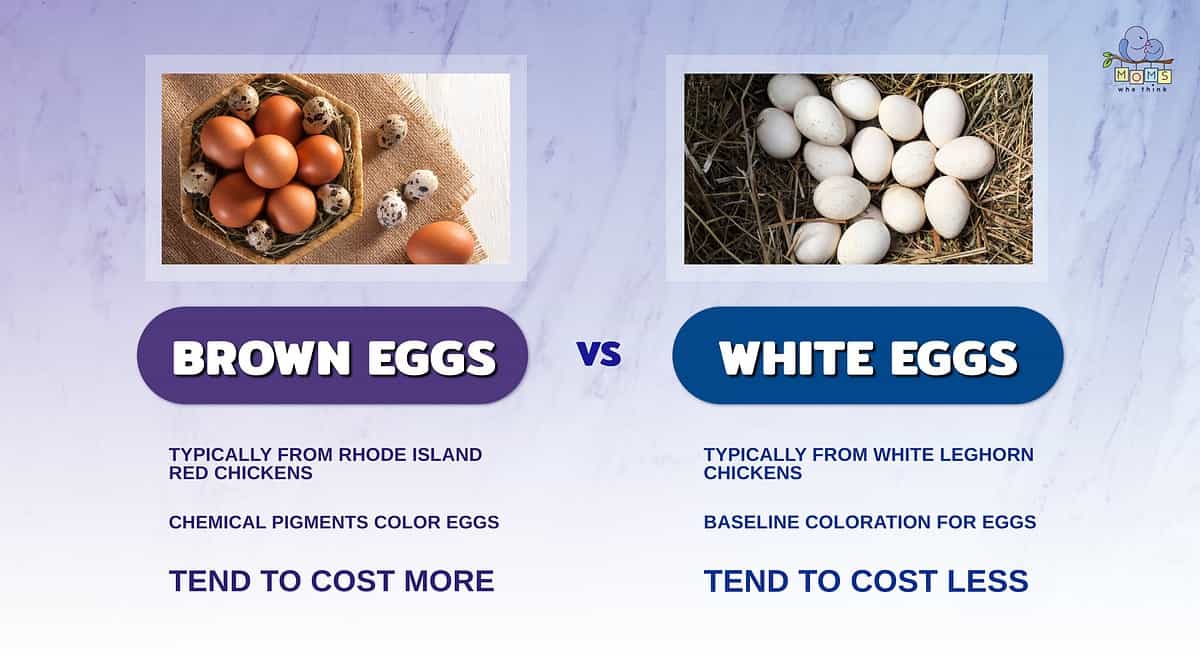
All eggs no matter their color are very healthy and provide a lot of nutritional value. Eggs are a great source of protein and are full of vitamins. Different breeds of chickens have different colored eggs. Some breeds lay white eggs, while other breeds lay brown or even green or blue eggs. The cause of the egg color is due to chemical pigments that naturally occur in the chicken. Diet, stress level, and the age of the chicken can also impact the egg color.

Potato Zucchini Hash With Over-easy eggs
- Yield: 4 servings
Ingredients
- 4 russet potatoes (3 pounds total), peeled, quartered lengthwise, and thinly sliced crosswise
- 4 tablespoons olive oil
- 1 yellow onion, thinly sliced
- salt and ground black pepper
- 2 medium zucchini, quartered lengthwise and thinly sliced crosswise
- 2 tablespoons butter
- 8 large eggs
Instructions
- Rinse potato slices well under cold running water, then drain and thoroughly pat dry.
- In a large nonstick skillet, heat olive oil over medium-high heat. Add onion and potatoes and season with salt and pepper.
- Cook, stirring frequently, until potatoes are almost cooked through and golden, about 15 minutes.
- Add zucchini, reduce heat to medium, and cook, stirring, until zucchini is soft and potatoes are cooked through, about 8 minutes. Season with salt and pepper.
- Meanwhile, heat a large skillet over medium heat. Add butter.
- Once the butter begins to sizzle, crack eggs into the pan and cook until whites are just set and golden brown at the edges, about 3 minutes.
- Divide hash among 4 plates, top each with 2 eggs, and serve.
The image featured at the top of this post is ©Svetlana Monyakova/Shutterstock.com


